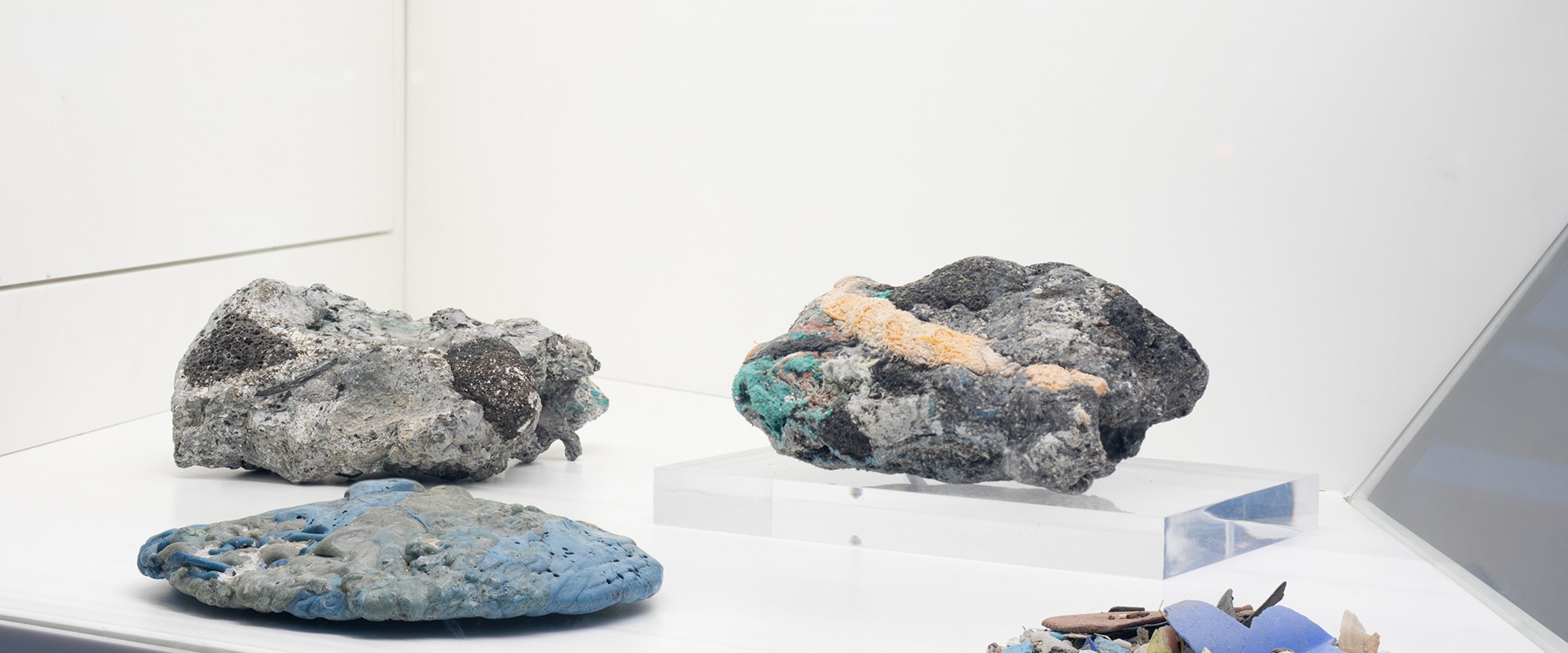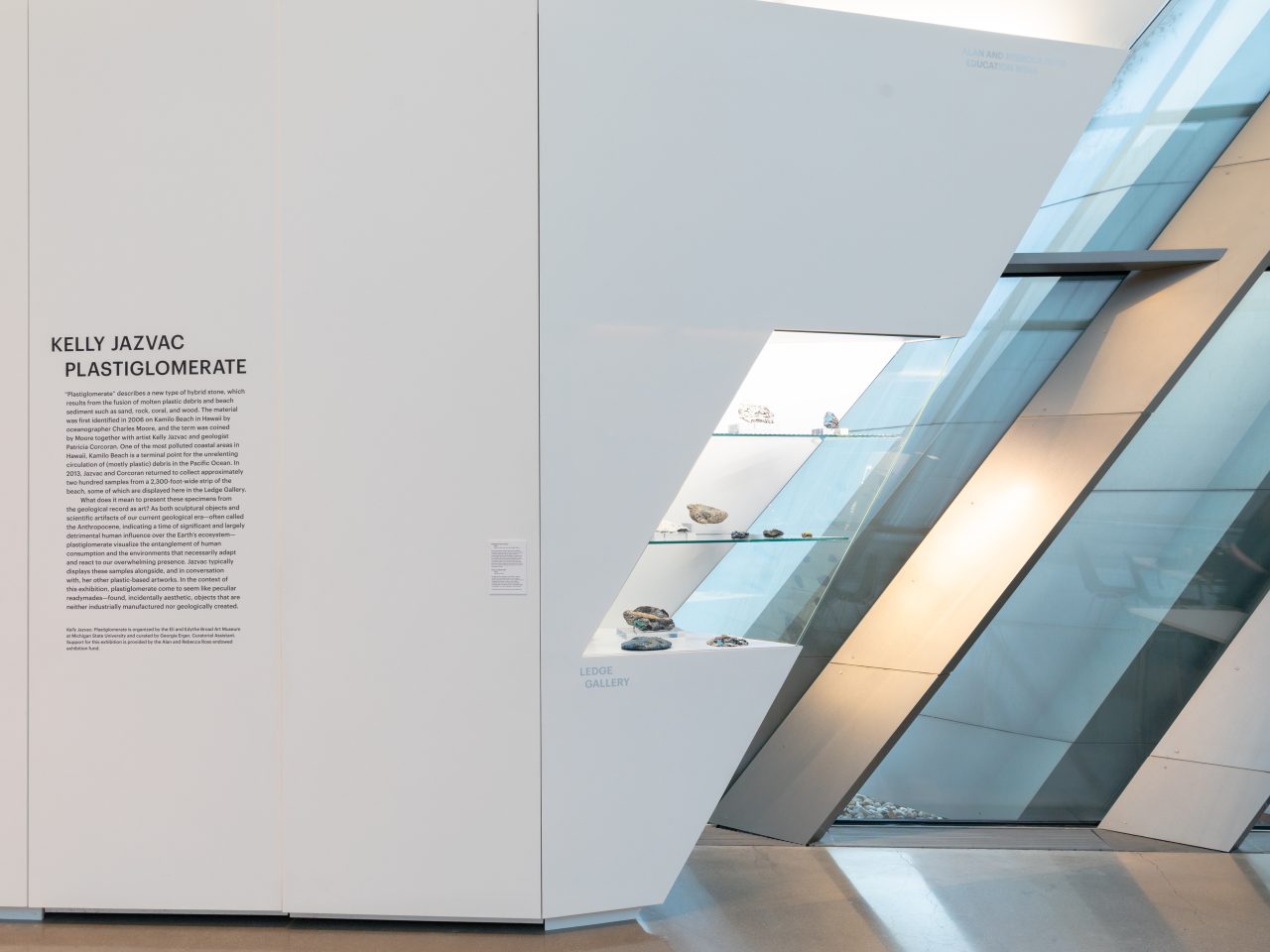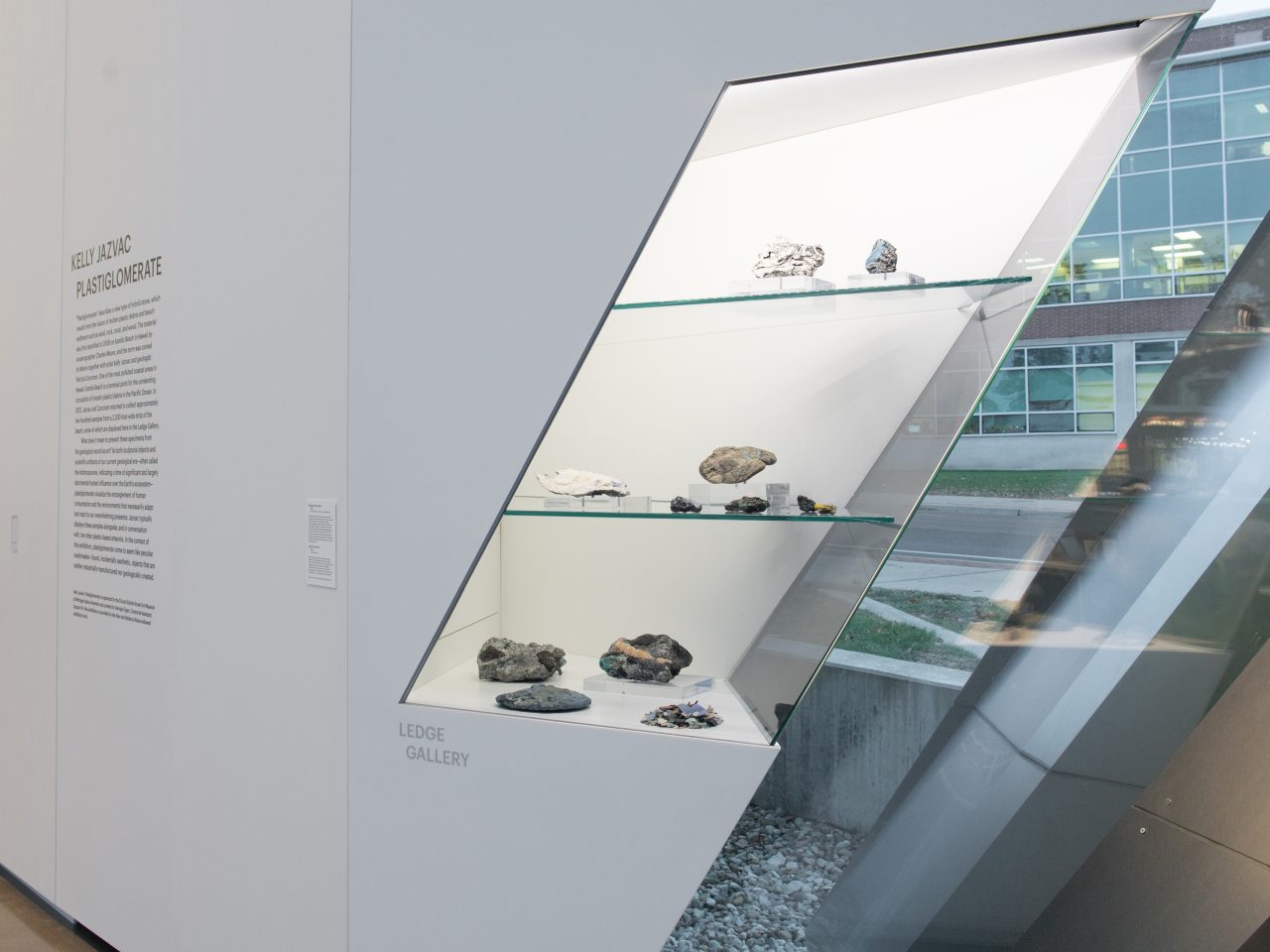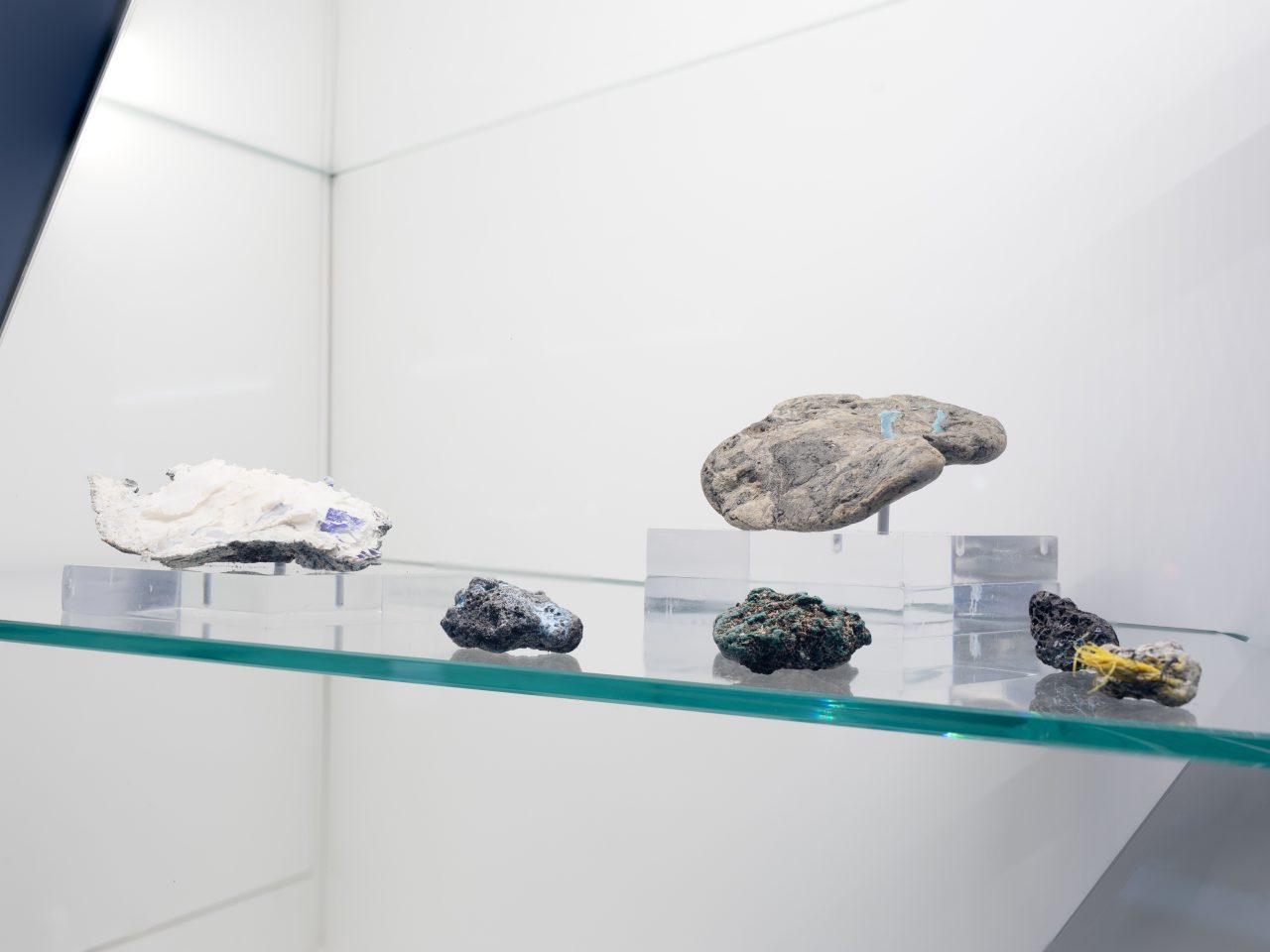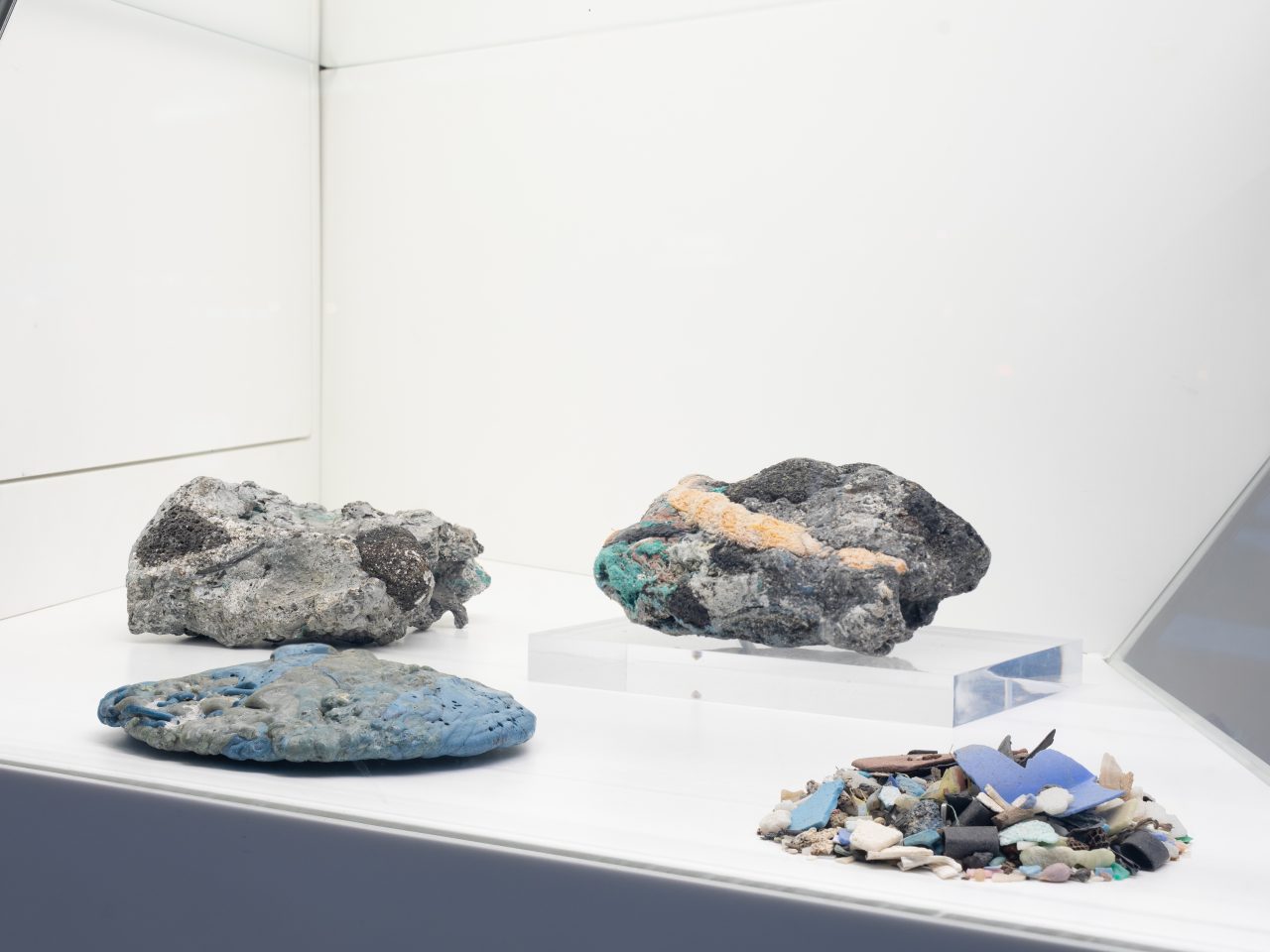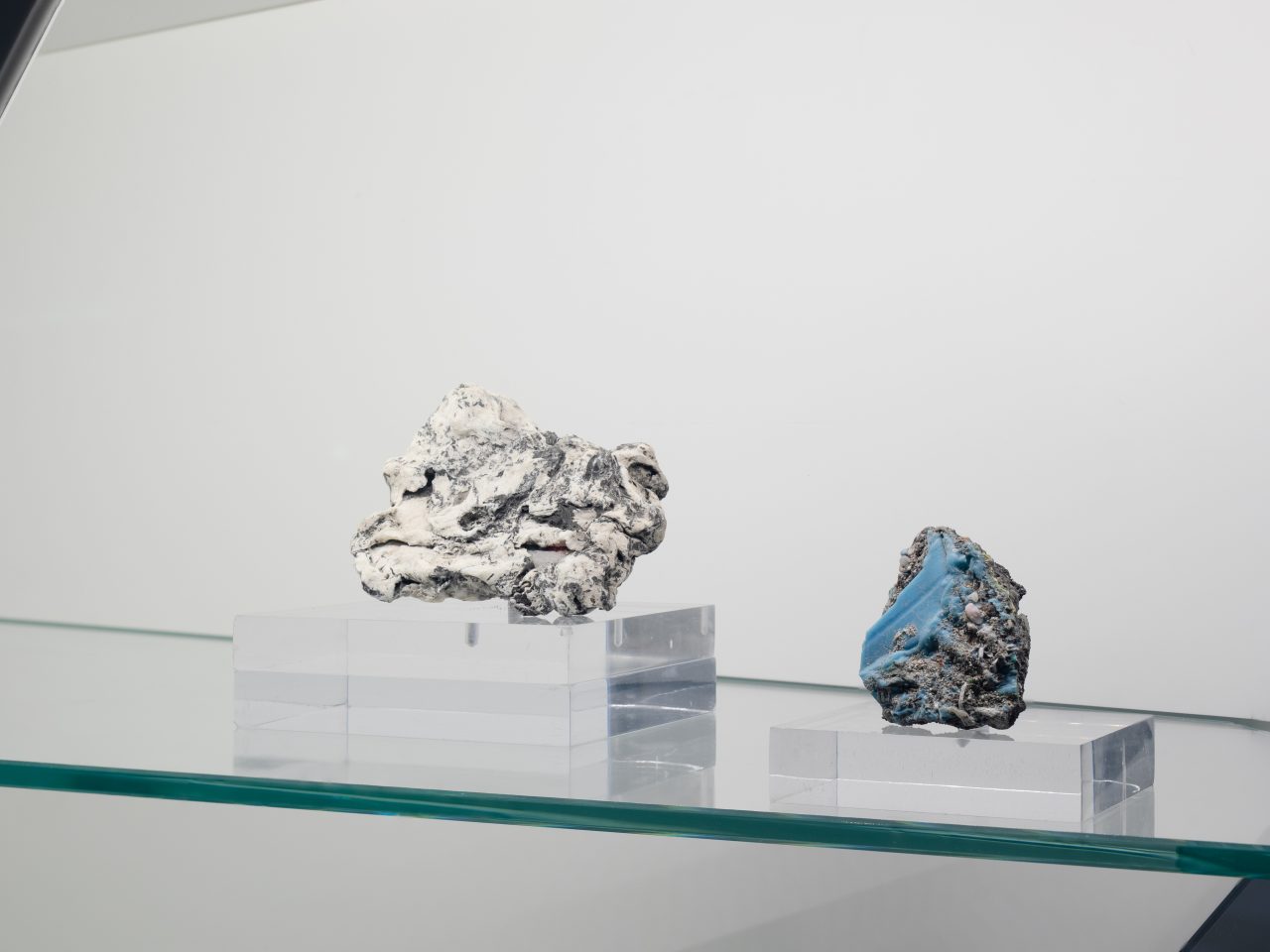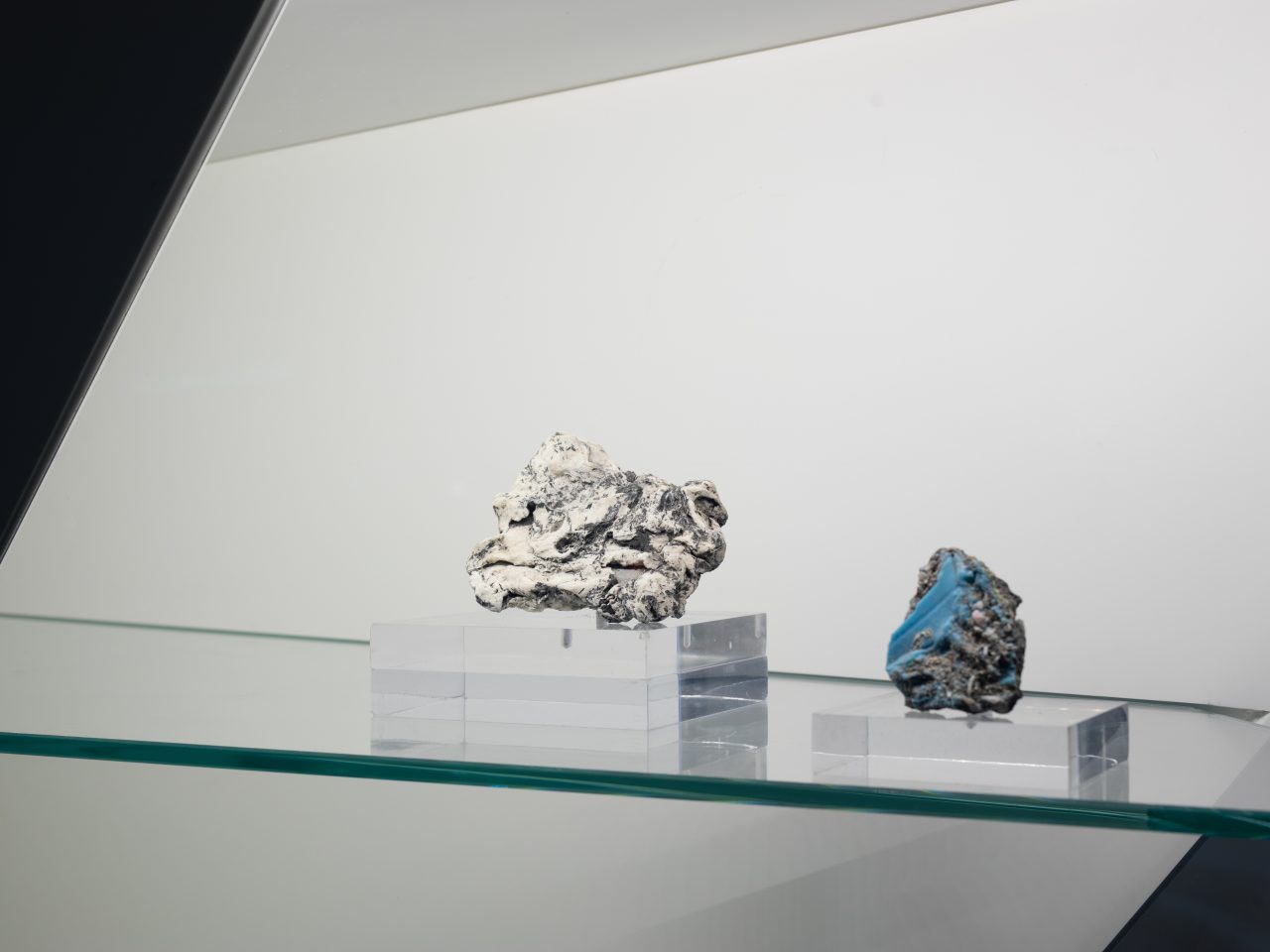Kelly Jazvac: Plastiglomerate is organized by the Eli and Edythe Broad Art Museum at Michigan State University and curated by Georgia Erger, Curatorial Assistant. Support for this exhibition is provided by the Alan and Rebecca Ross endowed exhibitions fund.
About the Exhibition
Collaboratively coined by artist Kelly Jazvac, geologist Patricia Corcoran, and oceanographer Charles Moore, the term “plastiglomerate” describes hybrid stones—fusions of molten plastic debris and beach sediment such as sand, rock, coral, and wood. Moore first noticed these strange materials in 2006 on Kamilo Beach in Hawaii, and in 2013, Jazvac and Corcoran returned to collect approximately two hundred samples from a 2,300-foot-wide strip of the beach. One of the most polluted coastal areas in the state, Kamilo Beach is a terminal point for the unrelenting circulation of (mostly plastic) garbage in the Pacific Ocean. Heat generated by volcanic activity was originally suspected to be the agent behind this fusion of plastic and beach sediment into a single substance. However, the true instigator is bonfires—a notably human activity.
Presented here as both sculptural objects and scientific artifacts of our current geological era—often called the Anthropocene, indicating a time of human dominance over the climate and environment—plastiglomerate visualize the dense entanglement of human consumption and the environments that necessarily adapt and react to our overwhelming presence. Due to their greater bulk density, plastiglomerate are more likely to be buried and preserved in the rock record than plastic-only particles. Will plastiglomerate, which are neither industrially manufactured nor geologically created, become a future stratum (a sedimentary rock layer in the Earth’s surface)? And what does it mean to understand part of the geological record as an aesthetic art object?
